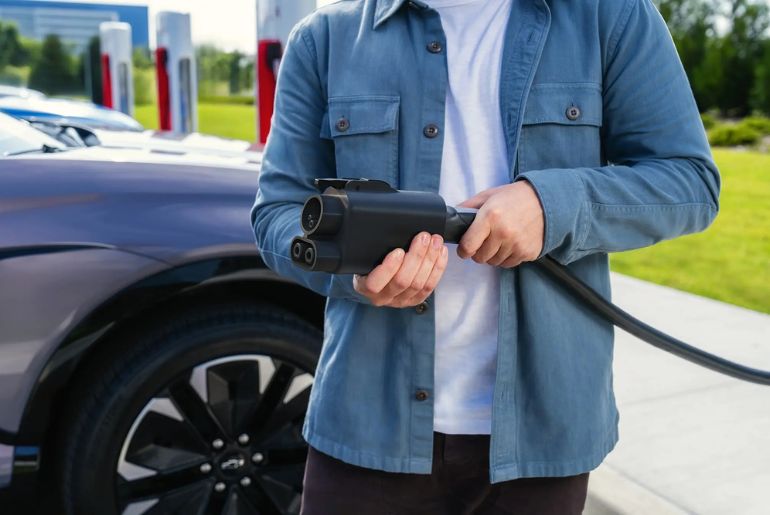General Motors (GM) has unveiled a new set of electric vehicle (EV) charging adapters aimed at making it easier for customers to switch from the Combined Charging System (CCS) to the North American Charging Standard (NACS), also known as Tesla’s charging format.
Why This Matters
For years, CCS has been the main fast-charging standard used by most non-Tesla EVs. However, Tesla’s NACS system is now being adopted across the auto industry due to its wider charging network and simpler design. The challenge for existing EV owners has been compatibility—many CCS vehicles cannot directly use Tesla’s Superchargers, and NACS-based cars cannot always connect to older CCS or J1772 stations.
GM’s newly launched adapters act as a bridge between these different systems, giving EV drivers the flexibility to charge at more locations without worrying about plug mismatches.
The New Adapter Lineup
GM is introducing four types of adapters:
-
NACS-to-CCS: Enables CCS vehicles to use NACS fast chargers (like Tesla Superchargers).
-
CCS-to-NACS: Let’s CCS chargers power NACS-equipped vehicles.
-
NACS-to-J1772: Allows NACS-equipped cars to connect to traditional Level 2 chargers.
-
J1772-to-NACS: Helps future NACS cars access existing J1772 charging ports.
This covers both fast charging for long trips and Level 2 home/public charging for daily use.
What’s Next for GM EVs
The 2026 Cadillac Optiq and the upcoming 2027 Chevrolet Bolt will be GM’s first EVs to come with built-in NACS charging ports, eliminating the need for adapters altogether. Until then, the adapter solution will help customers transition smoothly while still enjoying broad access to charging networks.
The Bigger Picture
Experts note that while adapters provide flexibility, they also raise concerns about “adapter clutter” and consumer confusion. Carrying multiple connectors may not be ideal, but for now, it is a necessary step as the EV industry shifts toward a single, unified standard.
By offering this solution, GM aims to reassure its customers that they will not be left behind during the ongoing shift to NACS, ensuring greater charging convenience and confidence in EV ownership.

